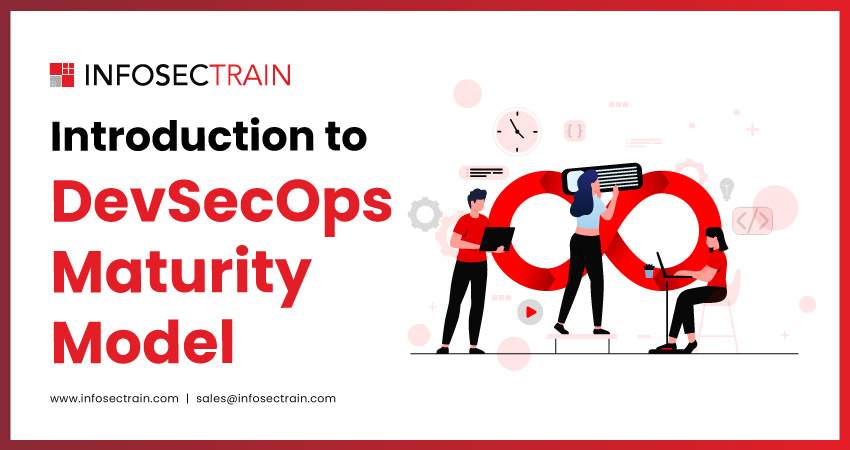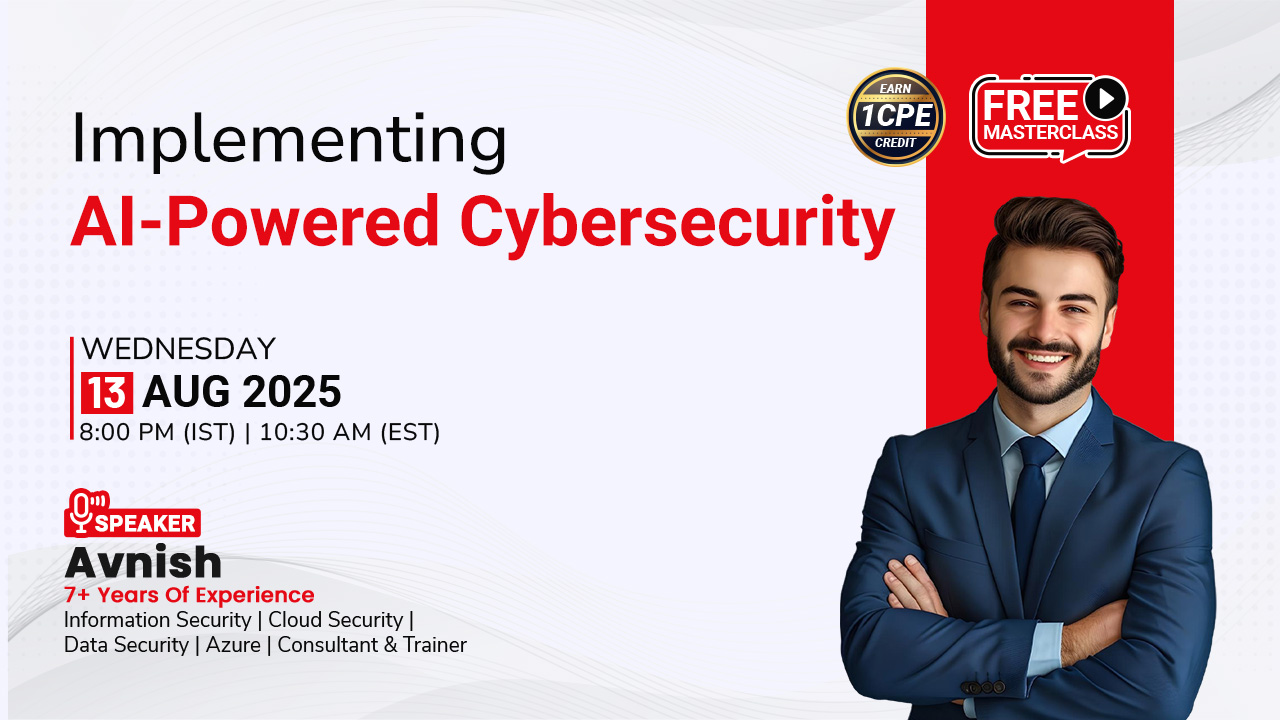Introduction to DevSecOps Maturity Model
DevSecOps is critical in today’s fast-paced software development landscape, emphasizing security integration to mitigate vulnerabilities and breaches. This methodology offers a structured approach, guiding organizations to enhance security within DevOps processes. The DevSecOps maturity model is a roadmap for progressing through its stages to strengthen security posture, accelerate software delivery, and foster collaboration. It signifies a significant change in the way security is addressed in today’s digital era, emerging as a crucial resource for managing the intricate challenges of modern software as organizations adopt DevSecOps practices. Its adoption is no longer optional but essential for staying ahead in today’s dynamic threat environment.

Introduction to the DevSecOps Maturity Model
The DevSecOps maturity model is a framework aiding organizations in assessing their security integration across the software development lifecycle (SDLC). As a roadmap, it emphasizes collaboration among Dev, SecOps, and Ops teams to enhance security and efficiency. This model comprises multiple stages, each signifying varying levels of security integration within the DevOps pipeline. These stages span from initial ad-hoc practices to fully automated and optimized security processes, enabling organizations to evolve their security posture systematically.
DevSecOps Maturity Model Stages
1. Initial Stage: In the initial stage, security practices are primarily reactive and improvised. It addresses security as an isolated concern, needing more collaboration among development, operations, and security teams. Vulnerabilities are typically dealt with reactively as they emerge, resulting in delayed responses and heightened risks.
2. Managed Stage: Organizations start implementing fundamental security controls within their DevOps workflows during the managed stage. They conduct periodic security assessments and might integrate some security tools into their pipeline. However, security remains partially integrated into the development lifecycle, and there might be discrepancies in security practices among different teams.
3. Defined Stage: Organizations have clearly established security policies and procedures integrated into their DevOps workflows in the Defined Stage. They document security requirements and utilize automated security testing tools across the development lifecycle. Collaboration among development, operations, and security teams enhances, resulting in expedited identification and remediation of security issues.
4. Automated Stage: During the Automated Stage, security practices become extensively automated and seamlessly integrated into the CI/CD pipeline. Automated security testing, including static code analysis, dynamic application security testing (DAST), and container security scanning, occurs automatically during the build and deployment process. Security feedback loops are established, empowering teams to identify and resolve vulnerabilities promptly.
5. Optimized Stage: In the Optimized Stage, organizations achieve the highest level of DevSecOps maturity. Security becomes a core part of the organizational culture, focusing on continuous improvement and innovation driving security practices. Advanced security automation and orchestration techniques are utilized to identify and mitigate security threats proactively. Security metrics are closely monitored and analyzed to assess the effectiveness of security controls and drive ongoing enhancements.
The Importance of a DevSecOps Maturity Model
1. Recognizing Strengths and Areas for Improvement: The model assists organizations in pinpointing where security is effectively integrated within development practices and areas requiring enhancement. Doing so facilitates targeted efforts to bolster security measures and optimize processes accordingly.
2. Minimizes Security Vulnerabilities: Integrating security across the SDLC allows for the early detection and mitigation of vulnerabilities, resulting in applications with heightened security measures. This proactive approach helps prevent potential security breaches and ensures the delivery of more robust and secure software products.
3. Establishing Objectives and Monitoring Advancement: The model outlines distinct maturity stages, offering a roadmap for enhancement and enabling organizations to monitor their journey toward a more refined DevSecOps strategy. This structured approach helps set achievable goals and track the progress in integrating security practices throughout the development lifecycle.
4. Enhances Communication and Collaboration: A common comprehension of maturity levels nurtures improved communication and collaboration among Dev, SecOps, and Ops teams. This shared understanding facilitates smoother interactions and cooperation, leading to more effective coordination in implementing security measures across the organization’s development processes.
5. Measuring Against Industry Norms: The model provides a standardized method to evaluate DevSecOps maturity, allowing organizations to compare their progress with industry standards and benchmarks. This facilitates a clearer understanding of where they stand with industry peers and helps identify areas for further improvement and alignment with best practices.
Benefits of Achieving a Higher DevSecOps Maturity Level
1. Improved Regulatory Compliance: A mature DevSecOps approach aids organizations in meeting regulatory requirements about data security. Through the integration of security practices across the development lifecycle, organizations can verify that their software adheres to essential standards and regulations, thereby diminishing the likelihood of non-compliance.
2. Efficient and Secure Development: Early integration of security measures reduces the need for rework and delays often caused by identifying vulnerabilities late in development. This approach ensures that software is developed faster and has enhanced security measures.
3. Decreased Likelihood of Security Incidents: Adopting proactive security measures minimizes the risk of vulnerabilities and breaches, enhancing overall security posture. This proactive approach helps organizations safeguard their systems and data against potential threats and vulnerabilities, reducing the likelihood of security incidents.
4. Enhanced Software Quality: Integrating security considerations throughout the SDLC results in more resilient and dependable applications. By addressing security concerns at every stage of development, organizations ensure that their software meets higher standards of quality, reliability, and performance.
5. Streamlined Development Processes: Incorporating security practices into the development lifecycle aids in streamlining processes, as it enables the early detection and resolution of security concerns. This leads to smoother development cycles, reduced rework, and faster time-to-market for software products.
DevSecOps Engineer Course With InfosecTrain
InfosecTrain stands out as a premier IT security training and consulting service provider globally, offering top-quality yet affordable customized training programs for businesses and individuals. With a focus on role-specific certification training, we provide professionals with the necessary skills to excel in the future. Our extensive DevSecOps training program is meticulously crafted to meet diverse needs, providing personalized guidance and support throughout your journey. With our comprehensive approach, you’ll develop the expertise and confidence required to navigate the ever-evolving DevSecOps landscape. We are dedicated to empowering you at every step, ensuring you’re well-prepared to excel in this dynamic field.
TRAINING CALENDAR of Upcoming Batches For DevSecOps
| Start Date | End Date | Start - End Time | Batch Type | Training Mode | Batch Status | |
|---|---|---|---|---|---|---|
| 13-Sep-2025 | 12-Oct-2025 | 19:00 - 23:00 IST | Weekend | Online | [ Open ] |







 1800-843-7890 (India)
1800-843-7890 (India)